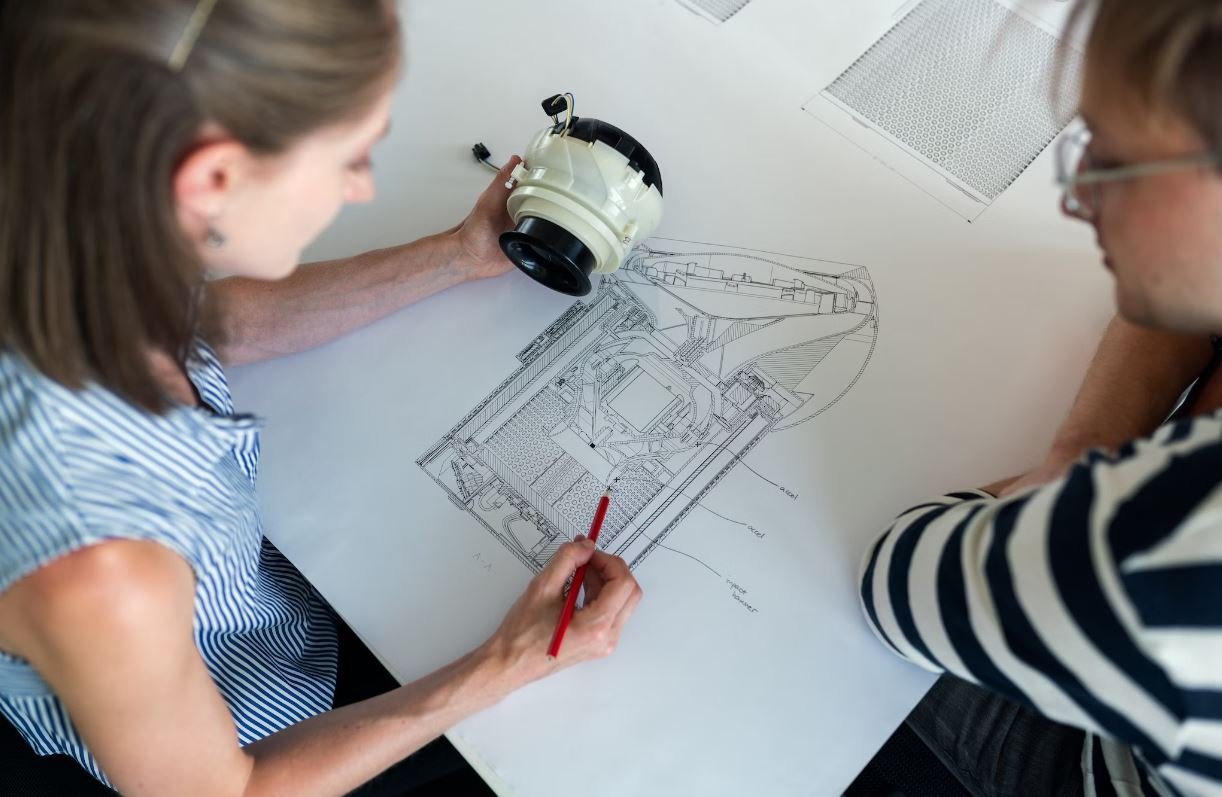Production Systems
A production system refers to a set of procedures and processes employed by a company to transform raw materials or inputs into finished goods or services. It encompasses all the activities involved in converting resources into products or services that can be delivered to customers. Production systems play a crucial role in the manufacturing and service industries, enabling organizations to efficiently and effectively meet customer demands.
Key Takeaways:
- Production systems are a series of activities that convert raw materials into finished products or services.
- These systems are essential for meeting customer demands and delivering products efficiently.
Types of Production Systems
There are several types of production systems commonly used in different industries:
1. Job Shop Production System
A **job shop production system** is characterized by the production of small quantities of customized products or services. It involves highly skilled workers utilizing a wide range of tools and equipment to create unique products based on customer specifications. *This system is ideal for businesses with diverse product offerings and high customer requirements for customization.*
2. Batch Production System
In a **batch production system**, goods are produced in groups or batches. The production process follows a specific sequence, and the batch is completed before moving on to the next one. *This system allows for efficient utilization of resources and can be well-suited for businesses with fluctuating customer demands.*
3. Mass Production System
The **mass production system** involves the production of goods on a large scale. It is characterized by the repetitive assembly of standardized products using automated machinery and assembly lines. This system aims to achieve economies of scale and streamlining of production processes. *Mass production is often used in industries where high-volume production is necessary, such as the automotive industry.*
4. Continuous Production System
The **continuous production system** is used for processes that operate continuously without interruption. It is commonly employed in industries such as chemical manufacturing and utilities. The system is characterized by a constant input of raw materials and a continuous output of finished products. *This system ensures a steady flow of production with minimal downtime.*
The Importance of Production Systems
Efficient production systems play a crucial role in both manufacturing and service industries. Here are some key reasons why production systems are important:
- Efficiency: Production systems streamline processes, eliminate waste, and optimize resource utilization, leading to increased efficiency.
- Cost Reduction: Effective production systems help in minimizing production costs through optimized workflows and economies of scale.
- Quality Control: Proper production systems include quality control measures to ensure consistent and high-quality products or services.
- Customer Satisfaction: Well-designed production systems enable timely delivery of products, meeting customer demands and enhancing satisfaction.
- Competitive Advantage: By implementing efficient production systems, companies can gain a competitive edge by offering products at competitive prices and with superior quality.
Comparing Different Production Systems
Let’s compare the various production systems using the following criteria:
| Production System | Customization | Resource Utilization | Downtime |
|---|---|---|---|
| Job Shop | High | Varies | Low |
| Batch Production | Medium | Efficient | Some |
| Mass Production | Low | High | Minimal |
| Continuous Production | Low | Highly Efficient | None |
Conclusion
In summary, production systems are the backbone of efficient manufacturing and service provision. Selecting the appropriate production system for a business depends on factors such as product customization, demand variability, and production scale. Understanding the different types of production systems and their distinct advantages can help businesses optimize their operations and meet customer requirements effectively.

Common Misconceptions
Definition of a Production System
One common misconception about production systems is that they are only applicable to manufacturing industries. However, a production system is a concept that can be applied to any industry or organization that involves the transformation of inputs into outputs. This includes service industries, such as healthcare, education, and software development.
- Production systems are not limited to manufacturing sectors only.
- Service industries can also have production systems.
- The concept of a production system applies to organizations of all sizes.
Automation Replaces Human Workers
Another misconception is that the implementation of automation and advanced technologies in production systems will lead to the replacement of human workers. While automation can streamline certain tasks and increase efficiency, it does not necessarily eliminate the need for human involvement in the production process.
- Automation and technology can enhance human workers’ productivity.
- Human workers are essential in managing and overseeing automated processes.
- New roles and job opportunities can emerge with the integration of automation.
Production Systems Only Focus on Efficiency
Many people mistakenly believe that production systems are solely concerned with maximizing efficiency at the expense of other factors. While efficiency is indeed an important aspect, production systems also take into account other factors such as quality, cost-effectiveness, flexibility, and responsiveness to customer demands.
- Production systems aim to achieve a balance between efficiency and other performance metrics.
- Quality assurance and control are integral components of production systems.
- Adaptability and the ability to respond to market changes are key considerations in production systems.
Production Systems are Static and Fixed
Another misconception is that production systems are static and unchanging. In reality, production systems are dynamic and continuously evolving to adapt to changing business environments and market demands. Continuous improvement and innovation are essential to ensure the competitiveness and sustainability of production systems.
- Production systems are adaptable and responsive to market trends and customer needs.
- Companies seek continuous improvement and optimization in their production systems.
- New technologies and methodologies constantly influence and shape production systems.
Production Systems are Expensive and Complex
Some people assume that implementing a production system requires significant financial investment and involves complex processes. While there may be initial costs associated with implementing a production system, the long-term benefits often outweigh the expenses. Additionally, production systems can be tailored to the specific needs and capabilities of each organization.
- Implementation costs can vary depending on the scale and complexity of the production system.
- Production systems can be customized to suit different organizations and industries.
- The benefits of a well-designed production system often outweigh the initial expenses.

Production Systems in Various Sectors
Production systems have a vital role in industries across different sectors. They facilitate the efficient production of goods and services, ensuring smooth operations and optimal outputs. The following tables present intriguing data and information about production systems in various sectors.
Automotive Production Statistics by Country
The automotive industry is a significant player in economies worldwide. This table showcases the top 5 countries in terms of automotive production in 2020.
| Country | Production (Million Units) |
|---|---|
| China | 25.2 |
| United States | 8.8 |
| Japan | 8.2 |
| Germany | 4.7 |
| India | 4.6 |
Energy Generation Methods Comparison
Energy generation is crucial to meet the growing demands of modern society. This table presents a comparison of different energy generation methods.
| Method | Efficiency (%) | Environmental Impact |
|---|---|---|
| Hydroelectric | 80 | Low |
| Nuclear | 90 | High (waste disposal) |
| Coal | 33 | High (carbon emissions) |
| Wind | 30 | Low |
| Solar | 20 | Low |
Food Production Trends
Food production methods and consumption patterns continuously evolve. This table highlights the adoption of various food production techniques.
| Technique | Advantages | Disadvantages |
|---|---|---|
| Conventional | High yield | Chemical usage |
| Organic | Environmentally friendly | Lower yield |
| Aquaponics | Water-efficient | Initial setup cost |
| Vertical Farming | Space-efficient | High energy consumption |
| Hydroponics | Absence of soil-borne diseases | Complex nutrient management |
Manufacturing Productivity Growth Comparison
Manufacturing productivity growth rates vary across regions. This table highlights the differences between selected countries.
| Country | Productivity Growth (% per year) |
|---|---|
| Germany | 3.0 |
| United States | 2.5 |
| China | 1.8 |
| South Korea | 4.2 |
| Japan | 2.0 |
Production Costs by Industry
The cost structure of production varies between different industries. This table presents the average production costs for select sectors.
| Industry | Average Production Costs |
|---|---|
| Automotive | $30,000 per unit |
| Textile | $10 per square meter |
| Pharmaceutical | $1,000 per dose |
| Electronics | $500 per item |
| Food & Beverage | $1 per pound |
Automation Adoption Rates
Automation plays a significant role in modern production systems. This table showcases the adoption rates of automation across various sectors.
| Sector | Automation Adoption Rate (%) |
|---|---|
| Manufacturing | 75 |
| Transportation | 55 |
| Agriculture | 40 |
| Retail | 20 |
| Healthcare | 10 |
Global Manufacturing Output by Region
Manufacturing is a significant contributor to global GDP. This table presents the regional distribution of global manufacturing output.
| Region | Manufacturing Output (% of Global) |
|---|---|
| Asia-Pacific | 45 |
| Europe | 25 |
| North America | 20 |
| Latin America | 5 |
| Africa | 5 |
Lean Manufacturing Principles Implementation
Lean manufacturing aims to eliminate waste and optimize processes. This table demonstrates the implementation rates of lean manufacturing principles in different industries.
| Industry | Implementation Rate (%) |
|---|---|
| Automotive | 85 |
| Textile | 70 |
| Pharmaceutical | 40 |
| Electronics | 60 |
| Food & Beverage | 75 |
Global Steel Production Rankings
Steel production is a vital sector supporting infrastructure and manufacturing. This table displays the top 5 countries in terms of global steel production.
| Country | Steel Production (Million Metric Tons) |
|---|---|
| China | 1,053.0 |
| India | 111.0 |
| Japan | 99.0 |
| United States | 87.0 |
| Russia | 71.0 |
Conclusion
Production systems are essential for the success and efficiency of various industries. Automotive production, energy generation, food production, and manufacturing all benefit from efficient production systems. The data presented in these tables demonstrate the global significance of production systems and how they vary across regions and sectors. By understanding the data and adopting advanced production systems, industries can maximize productivity, minimize costs, and contribute to global economic growth.
Frequently Asked Questions
What is a production system?
A production system refers to the set of processes, tools, and resources used in the creation and manufacturing of goods or services.
What are the main types of production systems?
The main types of production systems include mass production systems, batch production systems, job production systems, and continuous production systems.
What is mass production?
Mass production is a production system where a large quantity of identical products are manufactured on a continuous basis using efficient assembly line techniques.
What is batch production?
Batch production is a production system where a specified quantity of products is manufactured at a time, usually in different batches, allowing for flexibility in product variety.
What is job production?
Job production is a production system where products are created based on specific customer orders, each product being unique and made to meet individual requirements.
What is continuous production?
Continuous production is a production system where goods are produced without interruption in a continuous flow, often seen in industries such as oil refining or electricity generation.
What are some advantages of production systems?
Some advantages of production systems include increased efficiency, higher productivity, standardization of processes, cost reduction, and improved quality control.
What are some challenges faced in production systems?
Challenges in production systems can include managing resources effectively, reducing waste, ensuring timely delivery, maintaining product consistency, and adapting to changing market demands.
How can technology enhance production systems?
Technology can enhance production systems by automating processes, improving accuracy and speed, enabling real-time monitoring and analysis, facilitating communication and collaboration, and enabling predictive maintenance.
How can lean manufacturing principles be applied in production systems?
Lean manufacturing principles can be applied in production systems by eliminating waste, optimizing workflows, implementing continuous improvement, fostering teamwork and employee empowerment, and focusing on customer value.




